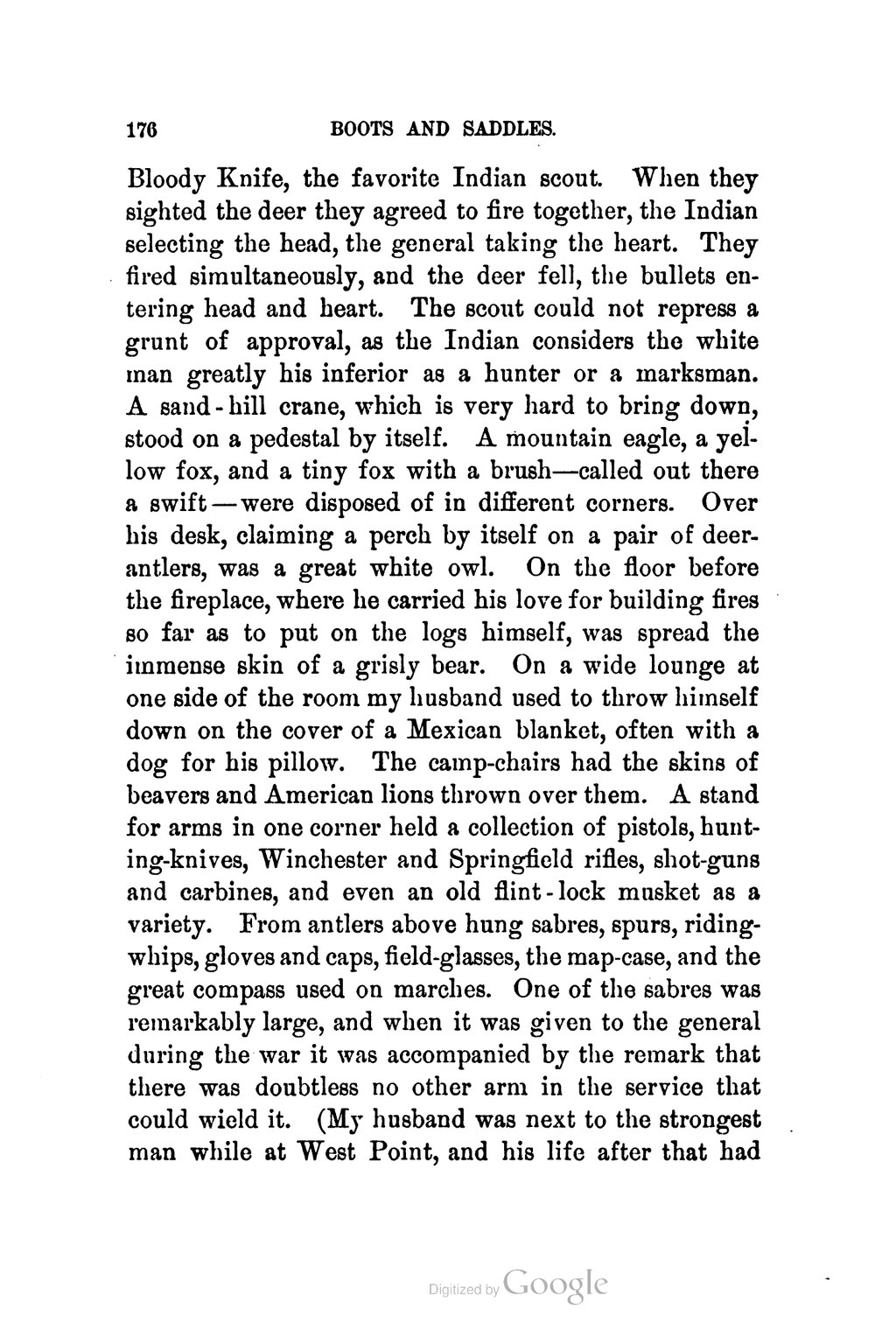Bloody Knife, the favorite Indian scout. When they sighted the deer they agreed to fire together, the Indian selecting the head, the general taking the heart. They fired simultaneously, and the deer fell, the bullets entering head and heart. The scout could not repress a grunt of approval, as the Indian considers the white man greatly his inferior as a hunter or a marksman. A sand-hill crane, which is very hard to bring down, stood on a pedestal by itself. A mountain eagle, a yellow fox, and a tiny fox with a brush—called out there a swift—were disposed of in different corners. Over his desk, claiming a perch by itself on a pair of deer-antlers, was a great white owl. On the floor before the fireplace, where he carried his love for building fires so far as to put on the logs himself, was spread the immense skin of a grisly bear. On a wide lounge at one side of the room my husband used to throw himself down on the cover of a Mexican blanket, often with a dog for his pillow. The camp-chairs had the skins of beavers and American lions thrown over them. A stand for arms in one corner held a collection of pistols, hunting-knives, Winchester and Springfield rifles, shot-guns and carbines, and even an old flint-lock musket as a variety. From antlers above hung sabres, spurs, riding-whips, gloves and caps, field-glasses, the map-case, and the great compass used on marches. One of the sabres was remarkably large, and when it was given to the general during the war it was accompanied by the remark that there was doubtless no other arm in the service that could wield it. (My husband was next to the strongest man while at West Point, and his life after that had
Page:Boots and Saddles.djvu/189
This page has been validated.
176
BOOTS AND SADDLES.
